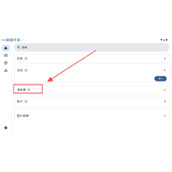swift where与匹配模式的实例详解
swift where与匹配模式的实例详解
前言:
在众多 Swift 提供给 Objective-C 程序员使用的新特性中,有个特性把自己伪装成一个无聊的老头,但是却在如何优雅的解决“鞭尸金字塔“的问题上有着巨大的潜力。很显然我所说的这个特性就是 switch 语句, 对于很多 Objective-C 程序员来说,除了用在 Duff's Device 上比较有趣之外,switch 语句非常笨拙,与多个 if 语句相比,它几乎没有任何优势。
1、基本使用
Swift中switch语句case后面可以用where对条件进行限制
| 代码如下 | 复制代码 |
|
let point = (3,3) switch point{ caselet (x,y)wherex == y: print("It's on the line x == y!") caselet (x,y)wherex == -y: print("It's on the line x == -y!") caselet (x,y): print("It's just an ordinary point.") print("The point is ( (x) , (y) )") } | |
2、使用if - case - where语句替代switch语句的使用方法
| 代码如下 | 复制代码 |
|
let age = 19 switchage{ case10...19: print("You're a teenager.") default: print("You're not a teenager.") }
ifcase10...19 = age{ print("You're a teenager.") }
ifcase10...19 = age where age >= 18{ print("You're a teenager and in a college!") } | |
注意:case条件必须放在”=”之前
swift 3.0以后if case 后面的”where”用”,”代替
3、if-case 与元组组合使用(元组解包使用)
| 代码如下 | 复制代码 |
|
let vector = (4,0) if case ( let x , 0 ) = vector where x > 2 && x print("It's the vector!") } | |
4、case - where 与循环组合使用
| 代码如下 | 复制代码 |
|
fori in 1...100{ ifi%3 == 0{ print(i) } }
forcaselet i in 1...100 where i % 3 == 0{ print(i) } | |
使用case限制条件可以大大减少代码量,使用起来非常方便,是swift语言的一大特色,好好掌握可以写出很优美的简洁的代码
原文链接:http://blog.*c*sd*n.net/u012903898/article/details/52820404















